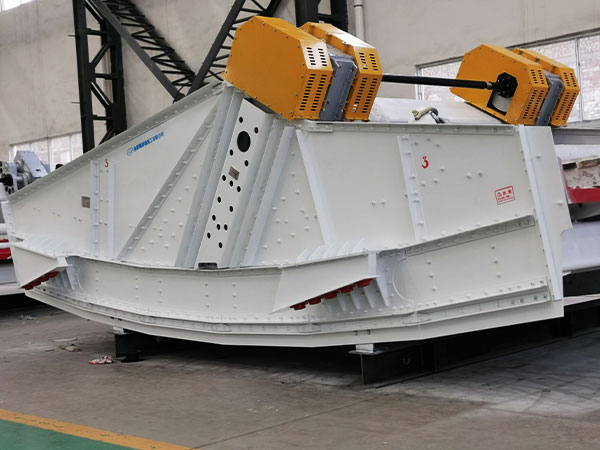What are the selection tips for vibrating screen springs?
Vibrating screen springs are crucial components in vibrating screens, providing the necessary support and isolation for the screen’s frame. They play a vital role in maintaining the stability and efficiency of the screen by absorbing vibrations and reducing mechanical noise.
Vibrating Screen Springs Types

Coil Springs
Description: Made of high-quality steel, these helical springs are the most common type used in vibrating screens.
Advantages: Good load-bearing capacity, durability, and cost-effectiveness.
Applications: Suitable for a wide range of vibrating screens, including mining and construction applications.
Rubber Springs
Description: Made from natural or synthetic rubber, these springs provide excellent vibration isolation.
Advantages: Superior damping properties, reduced noise, and resistance to corrosion and weathering.
Applications: Ideal for applications requiring noise reduction and where harsh environmental conditions are present.
Air Springs
Description: These springs use air pressure to provide the necessary cushioning effect.
Advantages: Adjustable stiffness, excellent vibration isolation, and minimal maintenance.
Applications: Used in applications where precise control of vibration damping is required.
Leaf Springs
Description: Made of flat plates of metal, these springs are less common but provide good load distribution.
Advantages: Simple design, good load distribution.
Applications: Limited use in vibrating screens, typically in specific custom applications.
Vibrating Screen Spring Selection Tips

1. Determine the Load Requirements
Load Capacity: Calculate the total load that each spring will support, including the weight of the vibrating screen and the materials being processed.
Dynamic Loads: Consider the dynamic forces generated by the vibration, as these can significantly impact the spring’s performance.
2. Choose the Right Spring Type
Coil Springs: Commonly used due to their durability and ability to handle heavy loads. They are suitable for most vibrating screen applications.
Rubber Springs: Provide better isolation and noise reduction but may not handle as heavy loads as coil springs.
Composite Springs: Made of materials like fiberglass, these springs offer good performance and corrosion resistance.
3. Consider the Spring Material
Steel: Durable and suitable for most applications. Ensure it is treated to resist corrosion if used in harsh environments.
Stainless Steel: Offers excellent corrosion resistance, ideal for applications in corrosive environments or where hygiene is critical.
Rubber: Used for rubber springs, provides good damping and isolation.
4. Determine the Spring Dimensions
Wire Diameter: Influences the spring’s stiffness and load-carrying capacity.
Outer Diameter: Affects the overall size and fit of the spring in the vibrating screen assembly.
Free Length: The length of the spring in its unloaded state; affects the stroke and overall movement range.
Number of Coils: Impacts the spring’s stiffness and load capacity.
5. Consider the Operating Environment
Temperature: Ensure the spring material can withstand the operating temperature range.
Corrosion: Choose materials or coatings that resist corrosion in humid, wet, or chemically aggressive environments.
Contamination: Consider the presence of dust, dirt, or other contaminants that could affect spring performance.
6. Evaluate Spring Stiffness and Damping
Stiffness (Spring Rate): Must be appropriate for the vibrating screen’s operating frequency and load. Too stiff or too soft springs can lead to inefficient operation or excessive wear.
Damping: Helps in controlling the amplitude of vibrations. Rubber springs and some composite materials provide inherent damping properties.
7. Check for Compatibility and Fit
Mounting Requirements: Ensure the springs fit properly with the mounting hardware and vibrating screen frame.
Alignment: Springs should be properly aligned to avoid uneven loading and potential failure.
8. Perform Testing and Prototyping
Field Testing: Prototype and test the selected springs under actual operating conditions to verify their performance.
Adjustments: Be prepared to make adjustments based on test results to optimize performance.
9. Consult with Manufacturers and Experts
Expert Advice: Work with spring manufacturers or vibration experts to select the best springs for your specific application.
Custom Solutions: Consider custom-designed springs if standard options do not meet your requirements.
Selecting the appropriate springs for a vibrating screen is crucial to ensure efficient operation, longevity, and minimal downtime. By carefully considering these factors, you can select the appropriate springs for your vibrating screen, ensuring efficient and reliable operation.



